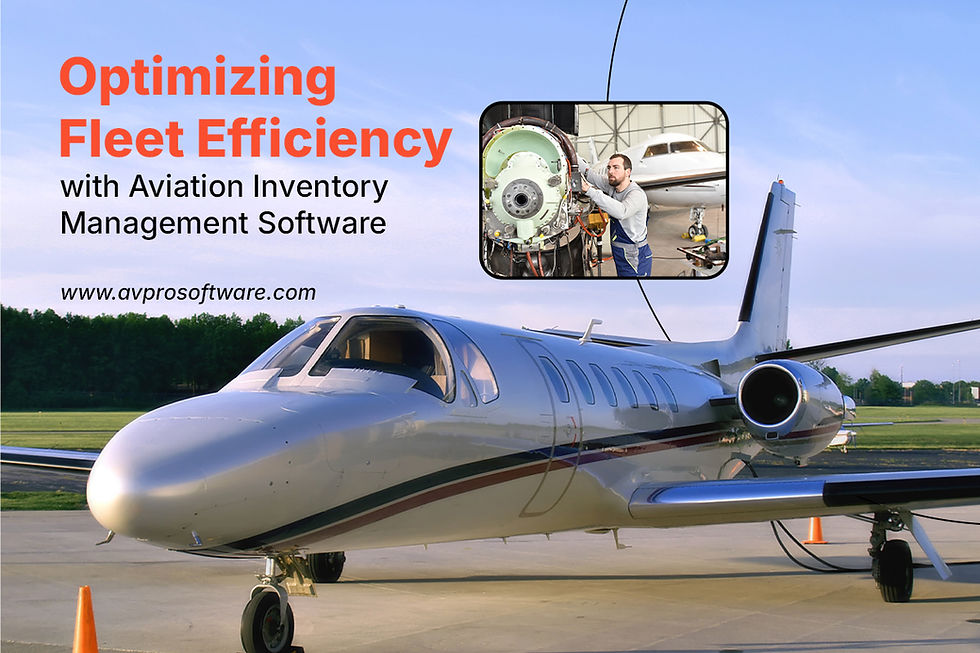The Role of Aircraft Maintenance Planning Software in Modern Aviation
- Aaron Schacht

- Sep 9
- 3 min read
The aviation industry operates under some of the most rigorous safety and compliance standards in the world. Every flight that takes off is backed by countless hours of behind-the-scenes inspections, repairs, and detailed record-keeping. At the center of this process lies aircraft maintenance planning software—a tool designed to bring precision, organization, and reliability to a highly complex field.
Why Maintenance Planning Matters
Aircraft are intricate machines with thousands of components, each requiring careful monitoring and scheduled upkeep. Missing even a minor inspection could lead to safety risks, regulatory violations, or costly delays. Traditionally, airlines and operators relied on paper logs or disconnected systems, but these methods often left room for human error.
Today, aircraft maintenance software provide an integrated solution, ensuring that every scheduled check, replacement, or inspection is tracked and executed on time. This shift from manual oversight to digital management has transformed maintenance into a more proactive and efficient process.
Key Features of Maintenance Planning Software
1. Centralized Scheduling:- One of the biggest challenges in aviation maintenance is coordinating different types of checks—daily inspections, heavy maintenance, or component overhauls. Modern software allows operators to centralize all schedules in one system, reducing overlaps and avoiding missed deadlines.
2. Regulatory Compliance:- Aviation authorities set strict maintenance standards, and non-compliance can result in hefty fines or grounded aircraft. Software solutions are designed to align with these requirements, automatically tracking compliance and providing easy-to-access reports during audits.
3. Real-Time Tracking of Components:- Every nut, bolt, and system has a lifecycle. Aircraft maintenance planning software monitors these lifecycles, ensuring components are serviced or replaced at the right intervals. Real-time tracking prevents unexpected failures and reduces unscheduled downtime.
4. Data-Driven Insights:- With digital records, operators can analyze patterns in component performance. This predictive maintenance approach helps identify issues before they become serious problems, saving both time and resources.
5. Integration with Operations:- Maintenance doesn’t exist in isolation—it must align with flight schedules, crew availability, and hangar capacity. Integrated aircraft maintenance software help bridge these functions, allowing seamless coordination across departments.
Benefits for Airlines and Operators
Increased Aircraft Availability: With better planning, aircraft spend less time on the ground and more time generating revenue.
Cost Control: Predictive insights and optimized scheduling reduce unnecessary repairs and prevent costly breakdowns.
Enhanced Safety: Consistent monitoring ensures no detail is overlooked, maintaining the highest safety standards.
Efficiency in Record-Keeping: Digital logs are easier to manage, search, and analyze compared to traditional paperwork.
The Future of Maintenance Planning
As technology continues to advance, aircraft maintenance planning software is expected to become even more intelligent. The integration of artificial intelligence and machine learning will likely refine predictive maintenance, making systems even more reliable. Cloud-based platforms are also gaining popularity, allowing global access to data and collaboration between teams spread across locations.
Furthermore, as the aviation industry moves toward more sustainable practices, maintenance planning will play a crucial role in reducing waste and optimizing fuel efficiency. By extending the life cycle of components and ensuring aircraft operate at peak efficiency, software solutions contribute not just to safety and cost savings but also to sustainability goals.
Final Thoughts
Aircraft maintenance is one of the most critical aspects of aviation, directly tied to safety, compliance, and operational success. With the increasing complexity of fleets and global aviation demands, aircraft maintenance planning software has become an indispensable tool. It streamlines processes, minimizes risk, and ensures that aircraft remain safe, reliable, and ready for the skies.
As the industry continues to evolve, embracing digital solutions will be key for operators aiming to stay ahead. Aircraft maintenance software are not just tools—they are the backbone of efficient and safe aviation operations.






Comments